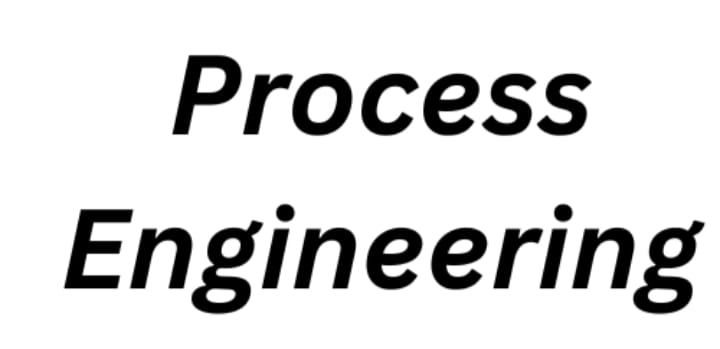Difference between PSV & PRV
Pressure relief valve :-
- A relief valve is an automatic spring-loaded pressure releiving device actuated by the static pressure upstream of the valve & valve opening increase as inside pressure of vessel increases.
- It is used primarily for liquid service.
- It has proportionate action
Pressure safety valve :-
- It is an automatic pressure-relieving device actuated by the static pressure upstream of the valve & rapid full opening action
- It is used for gases & vapour
- It has "pop" action
Types of Pressure safety valve (PSV) :-
1) Conventional pressure relief valve :-
- It is used when back pressure < 10% of set pressure.
- When valve is open, It will open to atmosphere.
- It is used for utility lines ( N2, cooling water, Non-toxic, Non-hazardous)
- Operation is directly affected by change in back pressure.
- Advantage = Better reliability, can be used in many service
- disadvantage = relieving pressure affected by back pressure which causes chatterng, may damage the valve.
2) Balanced Bellows pressure relief valve :-
- This valve provide an internal bellows above/on the seating disk in the chamber that minimizes the effect of back pressure of the valve.
- It is used for back pressure <50% of set pressure
- Because of minimizing the effect of back pressure, It is connected to flare header
- It is used in refineries, acids line, hydrocarbon, toxic lines etc.
- Advantage :- relieving pressure not affected by back pressure, can handle higher build-up back pressure
3) Spring-operated pressure relief valve (pilot operated valve) :-
- when differece in operating pressure & set pressure is very less that time this valve is used. Small change in pressure actuated the valve.
- It can used upto back pressure > 50% of set pressure.
- Advantage :- Can operated at upto 98% of set pressure.
Defination :-
1) Set pressure :- The pressure at which the pressure relief valve is set to open under operating condition.
2) Back pressure :- The pressure that exists at the outlet of pressure relief valve. there are two type of back pressure.
2.1) superimposed back pressure :- Pressure in discharge header before valve open (constant or variable),
2.2) Build-up back pressure :- Pressure in discharge header after valve open due to frictional losses.
3) Over pressure :- pressure increase over the set pressure.
4) Accumulation :- Pressure increase over the MAWP (Maximum Alloyable Working Pressure) of vessel.
5) Blowdown :- The difference between set pressure & the closing pressure of pressure relief valve
6) Simmer :- Initial movement of opening of PSV, voice like pressure cooker regulator.
7) Relieving pressure :- Pressure relief device`s set pressure plus accumulation is called Relieving pressure.
8) Closing pressure :- This is a pressure established as decreasing inlet pressure when the disk of the seat and there is no further tendancy to open or close.
Relieving events :-
1) Control valve wide open case (control valve failute case) :-
Assume there is reactor-1 has design pressure of 10 kg/cm2 & and reactor-2 has design pressure of 4 kg/cm2. In between them, there is control valve which minimize the pressure & flow to operating condition of reactor-2. By air failure control valve is fully open that time reactor-2 PSV will popop because full opening pressure in reactor-2 increases to 10 kg/cm2 which is higher the set point of reactor-2 that time PSV will popop.
2 ) External fire case :-
Assuming flammable liquid spillage on the ground floor or tiles of 1st, 2nd floor. The maximum flamelength is 8m. so under flamelength 8m every reactor is heated & pressure inside reactor will increase due to which PSV will popop.
3) Tube rupture case :-
As we know, In heat exchanger tube side fluid has high pressure the shell side. when by some reason tube inside shell is repture so high pressure fluid go to shell & pressure of shell increase to the set point & PSV will popop.
4) Thermal expansion :-
In chemical plant cooling tower is placed away from chemical plant. Because of that cooling water pipe line from plant to cooling tower exposed to sun. In shutdown period all activty are closed that time cooling water pipe line which exposed to sun content water which is evaporated due to sun radiation. Which buildup pressure in pipe line that time PSV will popop.
5) Block out case :-
Assume centrifugal pump pass cooling water to reactor jacket having design pressure 4 kg/cm2, & pump shutoff pressure is 10kg/cm2. By air failure outlet valve of jacket is closed 100% that why it creating shutoff pressure which is higher then jacket design pressure that time PSV will popop.
Where PSV are mandatory ?
- All pressure vessels ( reactor, distillation column, boilers, seperator)
- Blocked section of cooling liquid that are exposed to heat.
- Discharge side of PD pump, compressor & turbine
- vessel steam jackets
Line sizing criteria for PSV inlet pipe :-
4 criteria we have to consider:-
- Velocity criteria as per API 14
- Pressure drop criteria as per API 14
- ९v^2 <_ 50000 as per API 521
- ΔP (line loss + fitting loss) < 3% of set pressure.


.jpeg)
.jpeg)